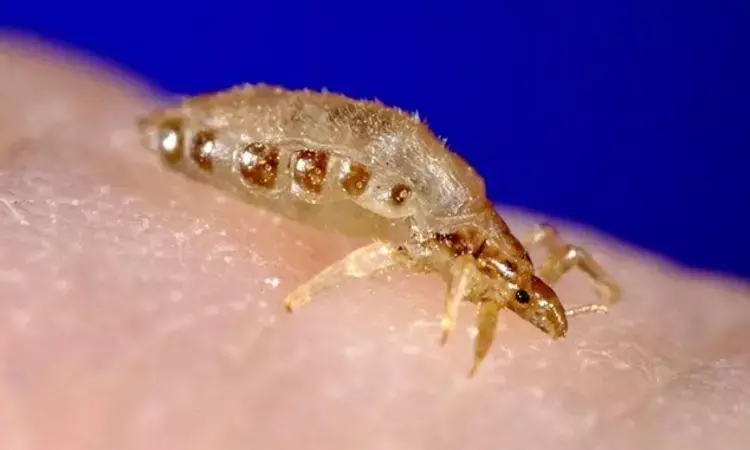- Home
- Medical news & Guidelines
- Anesthesiology
- Cardiology and CTVS
- Critical Care
- Dentistry
- Dermatology
- Diabetes and Endocrinology
- ENT
- Gastroenterology
- Medicine
- Nephrology
- Neurology
- Obstretics-Gynaecology
- Oncology
- Ophthalmology
- Orthopaedics
- Pediatrics-Neonatology
- Psychiatry
- Pulmonology
- Radiology
- Surgery
- Urology
- Laboratory Medicine
- Diet
- Nursing
- Paramedical
- Physiotherapy
- Health news
- Fact Check
- Bone Health Fact Check
- Brain Health Fact Check
- Cancer Related Fact Check
- Child Care Fact Check
- Dental and oral health fact check
- Diabetes and metabolic health fact check
- Diet and Nutrition Fact Check
- Eye and ENT Care Fact Check
- Fitness fact check
- Gut health fact check
- Heart health fact check
- Kidney health fact check
- Medical education fact check
- Men's health fact check
- Respiratory fact check
- Skin and hair care fact check
- Vaccine and Immunization fact check
- Women's health fact check
- AYUSH
- State News
- Andaman and Nicobar Islands
- Andhra Pradesh
- Arunachal Pradesh
- Assam
- Bihar
- Chandigarh
- Chattisgarh
- Dadra and Nagar Haveli
- Daman and Diu
- Delhi
- Goa
- Gujarat
- Haryana
- Himachal Pradesh
- Jammu & Kashmir
- Jharkhand
- Karnataka
- Kerala
- Ladakh
- Lakshadweep
- Madhya Pradesh
- Maharashtra
- Manipur
- Meghalaya
- Mizoram
- Nagaland
- Odisha
- Puducherry
- Punjab
- Rajasthan
- Sikkim
- Tamil Nadu
- Telangana
- Tripura
- Uttar Pradesh
- Uttrakhand
- West Bengal
- Medical Education
- Industry
Long term body lice infestation tied to anemia- JAMA

San Francisco: Individuals affected by body lice may be at higher risk of developing anemia, shows a recent study published in the journal JAMA Dermatology.
The researchers reported that patients with body life infestation had significantly lower mean hemoglobin levels (10.4 g/dL) compared to those without (12.9 g/dL). Also, the proportion of patients with anemia was higher in patients with body lice (70.4%) compared to those without lice (46.9%).
Pediculus humanus humanus (body louse) survives on blood meals and therefore body lice infestation could possibly lead to iron-deficiency anemia. Also, multiple case reports have suggested an association between severe or long-term lice infestation and anemia; however, no epidemiologic studies have not been performed. Risk factors for body lice infestation include lack of access to washing facilities and poor hygiene; which puts specific populations at risk, including individuals with mental illness or physical disability without adequate support, and persons experiencing homelessness.
Against the above background, Nora Rudd, University of California San Francisco School of Medicine, San Francisco, and colleagues set out to determine the association between body lice infestation and hemoglobin after adjustment for potential confounders.
For this purpose, the researchers performed a retrospective, exposed-unexposed study that featured patients with and without body live. They were matched in a 1:3 ratio on age, sex, and housing status.
Eligible patients including those hospitalized at the UCSF Moffitt-Long Hospital or Zuckerberg San Francisco General Hospital and received a dermatology consultation between November 1, 2017, and April 30, 2021. Patients with alternate anemia causes were excluded, and the housing status of eligible patients was dichotomized into stable housing and homelessness.
Mean hemoglobin level at hospital admission was the primary outcome, and the secondary outcome was anemia.
The study included 27 patients with lice and 81 without lice with a mean age of 53.8 years. Among these participants, 20 (18.5%) were women and 92 (85.2%) were homeless.
Salient findings of the study include:
- Patients with body life infestation had significantly lower mean hemoglobin levels (10.4 g/dL) compared to those without (12.9 g/dL).
- Body lice infestation was associated with 2.5 g/dL lower hemoglobin level after adjustment.
- The proportion of patients with anemia was higher in patients with body lice (70.4%) compared to those without lice (46.9%).
The study findings suggest that anemia was a potential systemic complication of lice infestation. The researchers add, "given the rising rate of homelessness further research is required to guide clinical recommendations and target public health interventions. "This could lessen and potentially eradicate the risk of body lice infestation."
"Future studies to demonstrate causation and to evaluate the role of sheltered status in the relationship between lice infestation and anemia are warranted," the team wrote.
Reference:
Rudd N, Zakaria A, Kohn MA, et al. Association of Body Lice Infestation With Hemoglobin Values in Hospitalized Dermatology Patients. JAMA Dermatol. Published online April 20, 2022. doi:10.1001/jamadermatol.2022.0818
Dr Kamal Kant Kohli-MBBS, DTCD- a chest specialist with more than 30 years of practice and a flair for writing clinical articles, Dr Kamal Kant Kohli joined Medical Dialogues as a Chief Editor of Medical News. Besides writing articles, as an editor, he proofreads and verifies all the medical content published on Medical Dialogues including those coming from journals, studies,medical conferences,guidelines etc. Email: drkohli@medicaldialogues.in. Contact no. 011-43720751


